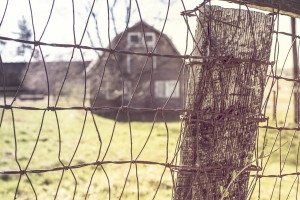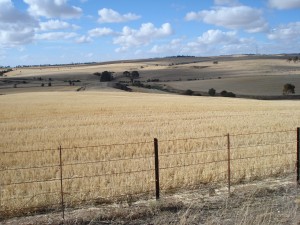If you are a farm owner, raising livestock on your farm, you might want to know about some of the common fencing mistakes that could be harmful for your farm animals. Whether you are an experienced rancher or just starting out, you will find something new in this article to help you with your farming.
In this article you will find 5 most common mistakes that people make when choosing and building a fence for their property. Learning about these mistakes will help you to avoid them when you build a fence for your own property or you could improve your existing fence.
1. Not having the right size corner posts
Setting up the corner posts correctly, ranks at the top of our list when it comes to building a quality fence for your property. No matter what type of fence you build, be it a barbed wire fence, woven wire or high tensile electric wire, your corner posts have to be set up properly.
There are two main issues found with corner posts.
- Corner posts that are not anchored down firmly into the ground
- Corner posts what are not the proper size
The strength of your fence will depend on how well your corner posts are set into the ground, especially if you have sandy or soft soil.
Gerrish, who has clients in 43 states, says, “the depth in the ground should be equal to, or greater than, the height of the top wire.” – beefmagazine.com
2. Wrong post diameter
 Using corner posts that are not the proper diameter for the situation is another common mistake fence installers make. Post diameter will depend upon the strength of the fence. If you have more wires you will need a bigger post. For example, a 1- or 2-wire, pasture subdivision fence, will require a post diameter of 4-5 inches. A 5- or 6-strand high-tensile or a 5-strand barbed wire fence will require a 6- to 7-inch-diameter post. For a net wire fence, 8 inch diameter posts are ideal.
Using corner posts that are not the proper diameter for the situation is another common mistake fence installers make. Post diameter will depend upon the strength of the fence. If you have more wires you will need a bigger post. For example, a 1- or 2-wire, pasture subdivision fence, will require a post diameter of 4-5 inches. A 5- or 6-strand high-tensile or a 5-strand barbed wire fence will require a 6- to 7-inch-diameter post. For a net wire fence, 8 inch diameter posts are ideal.
3. Posts not spaced properly
Fencers often make the mistake of putting too many posts. With barbed wire fence the rule of thumb is one post every 16.5 feet or one rod length. In an electric fence system, posts can be spaced 80-100 feet apart or 50 posts per mile.
4. Not enough grounding
For electric fencing, grounding is extremely important. Grounding rods act as antennas for receiving electrons and completing the circuit back to the energizer. If grounding is insufficient, the electrons in the circuit cannot find its path back to the fence, and the shock will be ineffective. The general rule of thumb is to use three feet of grounding rod per joule of energy output. So, for example if you are using a 6-joule energizer, you will need 18 feet of ground rods. You will need to spread these out with three 6-foot grounding rods at 10 foot intervals.
Galvanized rods are perfect as grounding rods. They are not as expensive as copper and you don’t have to worry about rust or corrosion.
5. Not knowing your property boundary
 Not knowing your boundary lines is an embarrassing mistake you can make when installing a fence around your property. It can even become an expensive mistake. If you build on your neighbor’s property or on public property, you will have to take down your fence and re-fence your property. In addition, you could be facing hefty fines, court costs, or legal costs.
Not knowing your boundary lines is an embarrassing mistake you can make when installing a fence around your property. It can even become an expensive mistake. If you build on your neighbor’s property or on public property, you will have to take down your fence and re-fence your property. In addition, you could be facing hefty fines, court costs, or legal costs.
Hope you will find these fencing tips useful. Avoid these common mistakes, and you will surely have a secure and long lasting fence system for your property. Remember, always work safely and take necessary precautions. Always use approved grounding strap or grounding clamps and approved and recommended fencing materials.
We will be back with more tips on Sustainable Livestock Nutrition on our next blog, so please read our blogs regularly. For any questions or comments, call our office at 303-495-3705, or post your comments below in the comment box.
We’d appreciate your feedback on this article, so please leave your comments here or on our Facebook page.
P.S: Have you tried our micro-green fodder system? Would you like to learn about it? Please Click here to book a meeting with us.
Source: Sustainable Livestock Nutrition
Related articles and resources:
- Choose The Appropriate Electric Fence Wire | Pasture Range content from BEEF Magazine
- 7 Common Fencing Mistakes | Most Common Errors In Livestock Fencing & How To Avoid Them | Pasture Range content from BEEF Magazine
- Fence Installation Mistakes – Fence Specialists
- 5 Common Fence Installation Mistakes | Riverside Fencing – Wilton, CT
- Grounding Rod Installation | How To Ground an Electric Fence – Zareba
- Improve Cattle Handling with “Follow the Leader” Instincts | Sustainable Livestock Nutrition



